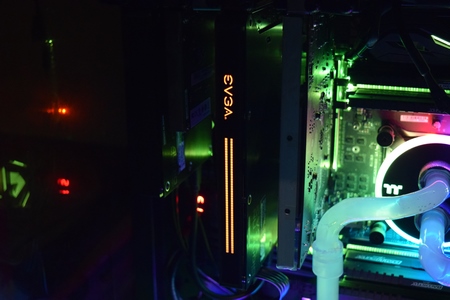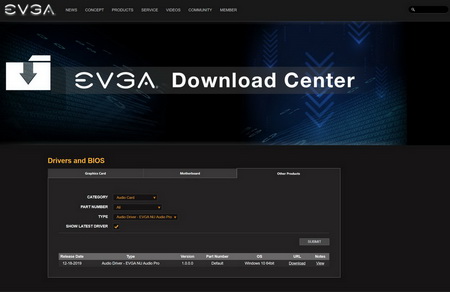AUDIO DRIVER
You can grab the latest software/driver version from the official EVGA support page seen above (since the card is brand new the software package is still at version 1.0).
Strangely enough however a new firmware version was available for our card (installation takes less than a minute to complete).




Unlike the software for the NU Audio card that of the NU Audio Pro 7.1 card allows you to set the volume levels of each of the analog connected speakers (you will need to choose your configuration of course), the digital SPDIF output, the headphones output (each channel) and the microphone input (there's also a useful boost function here).



You can also change the sample rate (up to 192kHz/32bit max for multi-channel seen above), enable hi-res mode for your stereo speakers (up to 384kHz/32bit) and use one of the available audio effects for your output (3D audio/reverb/compressor) and input (volume stabilizer/volume reduction).
By clicking on the left and right arrows you can move to the 2nd screen from where you can access the bass, treble boost and voice clarity wheels.
If the quick adjust wheels don't do the trick for you there's always the advanced tab from where you can fine tune audio via an equalizer which then you can save in the 6 available presets/profiles.


By clicking on the LED selection at the top you can assign one of the 10 available modes to each of the three available RGB LED zones (unfortunately just like the NU Audio model the Pro 7.1 model doesn't come with support for RGB sync).
The next screen allows the end user to change the language of the software, check the installed firmware version and have the software screen minimize at start.



Next screen includes various settings such as the preferred ASIO buffer size, safe mode (enabled by default - slightly increases latency when enabled) and several digital filters for both outputs and inputs.


Here you can take a quick look at the brand new 3-zone RGB lighting system.

 O-Sense
O-Sense












.png)

